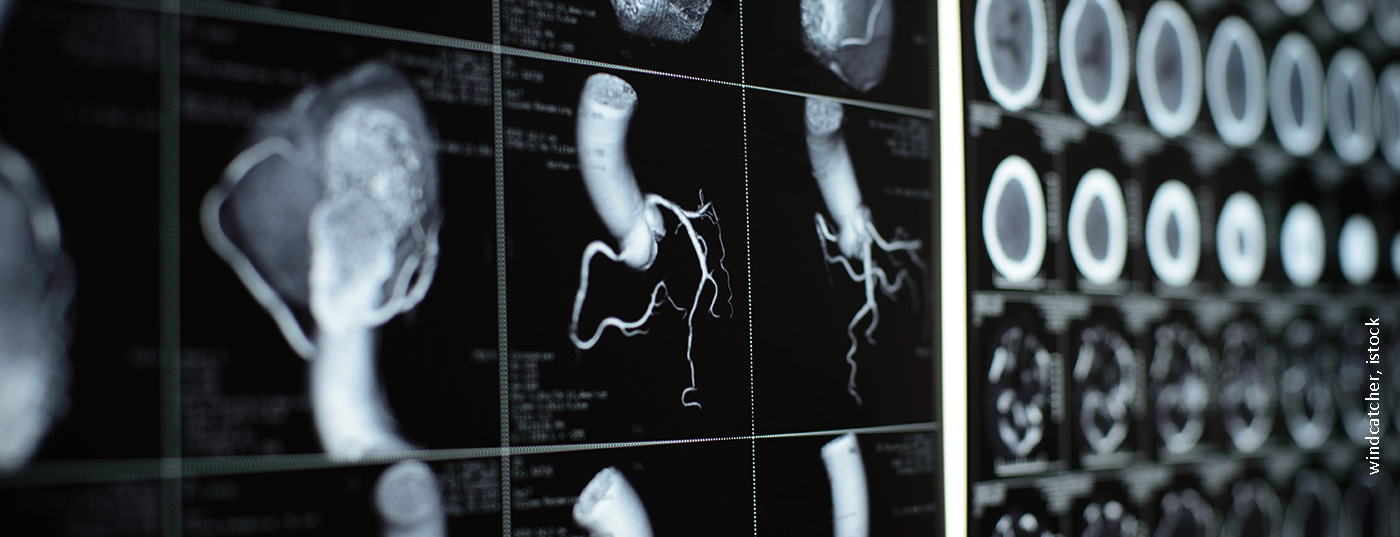In patients with stable chest pain and an intermediate probability of obstructive coronary artery disease, the benefit-risk profile favors CT rather than invasive coronary angiography as the first diagnostic imaging test.
Studies consistently demonstrate that women who present with stable chest pain and suspected coronary artery disease have more symptoms but less severe myocardial ischemia and less extensive epicardial coronary artery disease than men. This gender paradox leads to increased misdiagnosis and poorer outcomes. This is a problem in view of the fact that coronary heart disease accounts for a similarly high proportion of all causes of death in Western countries in both women and men.
The reference standard for the diagnosis of obstructive coronary artery disease is invasive coronary angiography, which also allows coronary revascularization to be performed in the same session. However, rare but serious procedural complications can occur, and women undergoing invasive coronary screening and treatment are at higher risk for bleeding, vascular complications, and stroke than men. Therefore, the efficacy of computed tomography compared with invasive coronary angiography was evaluated in women and men with stable chest pain suspected of coronary artery disease.
Initial diagnosis CT or invasive coronary angiography
A prospective, multicenter, randomized study included 2002 women and 1559 men (total of 3561 patients) with suspected coronary artery disease due to stable chest pain and a pretest probability of obstructive coronary artery disease of 10-60%. In a 1:1 ratio, they were assigned to either computed tomography or invasive coronary angiography as the initial diagnosis. In addition, an intention-to-treat analysis was performed. The primary end point was serious adverse cardiovascular events (MACE; cardiovascular death, nonfatal myocardial infarction, or nonfatal stroke). Important secondary end points were an extended MACE composite (cardiovascular death, nonfatal myocardial infarction, nonfatal stroke, transient ischemic attack, or serious procedure-related complication) and serious procedure-related complications.
CT superior in terms of complications
No statistically significant gender interaction was found for MACE, the extended MACE composite, or serious procedure-related complications. In both sexes, the rate of MACE did not differ between the computed tomography and invasive coronary angiography groups. In men, the extended composite MACE end point occurred less frequently in the computed tomography group than in the invasive coronary angiography group (2.8% vs 5.3%). Among women, the risk of suffering a major complication related to the procedure was lower in the computed tomography group (0.3%) than in the invasive coronary angiography group (2.1%).
Overall, there was no evidence of a difference between women and men in the utility of computed tomography rather than invasive coronary angiography as the initial diagnosis for the management of stable chest pain in patients with an intermediate pretest probability of coronary artery disease. An initial computed tomographic scan was associated with less severe procedure-related complications in women and a lower incidence of extended MACE composite in men. Sensitivity analysis showed a lower risk of extended MACE in women but no significant interaction between sex and study group for the primary and secondary endpoints. In principle, both men and women benefit from computed tomography as the first diagnostic examination.
Further reading:
- DISCHARGE Trial Group. Comparative effectiveness of initial computed tomography and invasive coronary angiography in women and men with stable chest pain and suspected coronary artery disease: multicentre randomised trial. BMJ 2022; 379: e071133.
CARDIOVASC 2022; 21(4): 32












